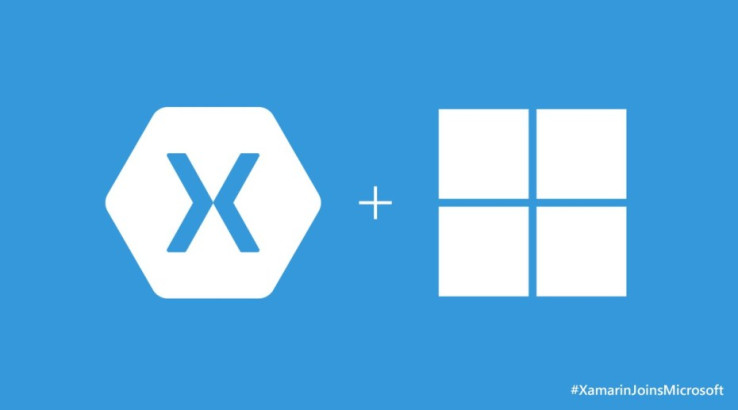

Microsoft announced in February its plans to acquire the cross-platform development platform Xamarin; the deal closed about two weeks ago. Even though the ink on the contracts has barely dried, Microsoft already made Xamarin the center of attention at its annual Build developer conference today by announcing its plans to roll Xamarin into every Visual Studio tier, including the free Community Edition version.
After the keynote, I had a chance to sit down with both Xamarin CEO and co-founder Nat Friedman and Microsoft’s corporate vice president of Visual Studio Julia Liuson to talk about the acquisition.
Xamarin and Microsoft always felt like natural allies. Over the years, the companies’ relationship only grew stronger, so the acquisition didn’t really come as a major surprise.
As Friedman, who co-founded Xamarin with Miguel de Icaza, told me, the acquisition discussions with Microsoft started in earnest around the middle of November 2015 and he signed the term sheet in the early morning on January 1.
Over the course of the discussion, Friedman and Liuson stressed Microsoft’s support for open source as one of the reasons Xamarin is such a good fit for the company. “That attracted us a lot,” Friedman said. “Satya [Nadella] and Scott [Guthrie] have made huge changes and the vibe, the personality, the perspective, the energy of Microsoft are so exciting to us right now. That was a huge attraction to us — being part of this new Microsoft, being part of this recognition that we are in a multi-platform world, this cloud revolution.”
While Xamarin long stressed that it wasn’t really for sale, Friedman argued that what also attracted him in this deal was the ability to reach more developers. “We had a very healthy, exciting, stand-alone business that we loved running, but when you have the opportunity to make your code open source and free and available to hundreds of times as many developers, it’s hard to pass that up,” he said.
He also stressed that after having met Nadella, Liuson and other members of Microsoft’s executive team during an offsite meeting a few weeks ago, he felt even better about the acquisition. “I was really surprised, to be honest,” he said. “Even already having this optimistic viewpoint that lead me to doing the acquisition, I wasn’t expecting the level of talent, passion, optimism, cooperation, and enthusiasm that I saw among Satya’s and Scott’s top team.” He also noted that he doesn’t think “the public reputation of Microsoft, even though it has improved, has caught up to the reality of what’s going on inside Microsoft.”
Judging by Friedman’s comments, Microsoft decided to add Xamarin to Visual Studio — including the free Community Edition — pretty early on in the discussions, and Friedman noted that this only helped make the deal more appealing to the Xamarin team, which will, with a few exceptions, make the transition to Microsoft even as Xamarin keeps its SF headquarters.
So what’s on the roadmap for Xamarin going forward now that it has open sourced many of its tools and has officially become part of the Visual Studio ecosystem? Friedman and Liuson told me that a deeper integration with Visual Studio (which already features lots of Xamarin support) is an obvious next step, but they also stressed that Microsoft’s Azure cloud computing services and its DevOps services are other integration points for Xamarin, as well. “Azure is an incredible service,” Friedman said. “We will provide deeper integration between Xamarin and Azure so developers can more easily build cloud-connected apps. You want a consumer-grade frontend and a scalable, global cloud backend and we now have the pieces to make that happen.”
Xamarin’s Test Cloud, which lets developers remotely test their apps on a bank of hardware devices, also makes for an easy product to integrate into the likes of Visual Studio and Microsoft’s DevOps and application life-cycle services. Friedman noted that the company plans to continue to invest in the service (though he hinted that the name may change over time).
With Xamarin Studio for the Mac, Microsoft now owns a Mac-based IDE. When I asked Liuson about what the company’s plans are for that, she noted that Xamarin is a powerful brand and that the company plans to stick with it, “but over time, we’ll see what happens.” And, as Friedman added, “If Xamarin could over time earn the honor of representing Visual Studio on Mac, that would be great.” At this point, though, it looks like the Xamarin brand isn’t going away anytime soon.
Friedman also tells me that Xamarin will expand its Xamarin University offering, which offers both live and online training for developers, to “cover the rest of the mobile stack.”
In addition, he noted the company hopes it’ll also be able to foster an even more active open source developer community under Microsoft.
“It’s rare that you get an acquisition to align all of the four stakeholders in the company. For us, that’s our investors, employees, products and customers,” Friedman said. “For each of those, you see huge advantages — and now that the plot has been unveiled a little bit, you can see why this is so beneficial. For our customers, to have Microsoft standing behind the product upon which they are basing their mobile strategy is a huge benefit.”
Both Xamarin and Microsoft are obviously still in their honeymoon phase, but given that the two companies already worked so closely together before, they both clearly knew what they were getting themselves into. Friedman and Liuson seem extremely optimistic about how well the merger will play out and so far, it looks like it will also benefit both Xamarin’s and Visual Studio’s users in the long run.

